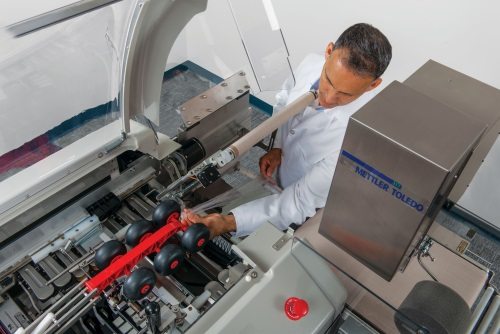The quality of packaging film has a decisive impact on the reliability and performance of backroom processes, as confirmed by research conducted by Mettler Toledo.
The company has published its findings along with tips for the effective selection and use of film in a complimentary online whitepaper titled Wrapping Machine Film: Chemical Analysis of Backroom Film.
It subjected films from various suppliers to long-term studies of chemical composition and performance, and has now presented the results in the new white paper.
Written for grocery retailers and backroom managers, this whitepaper presents findings that prove that investing in high quality film is a cost saver in the long run.
Chemical analysis demonstrates differences
Qualitative differences between packaging films are essentially imperceptible to the human eye.
However, scientific analysis reveals that films from suppliers demonstrate some clear variations in chemical composition – and hence in performance in daily backroom use.
Poor-quality films are more susceptible to becoming ripped or punctured, and cause more rapid wear and tear on the mechanical parts of the wrapping machine.
In contrast, high-quality film ensures securely wrapped products, causes less mechanical wear and tear and improves efficiency in the backroom processes.
Four film properties
Within the framework of its research, Mettler Toledo identified four mission-critical film properties.
Quality differences between various types of film, as well as different storage conditions, can cause some clear variations in these properties:
• Roll width: Film which is either too wide or too narrow can result in rips in the wrapped package and accelerate wear and tear on the machinery.
• Peel force: If the film adheres to the roll too tightly, a stronger peel force is required during wrapping which causes the feed mechanism of the machine to wear faster.
• Elasticity and memory: A lack of elasticity (flexibility) and memory (ability to return to its original state after being stretched) of the film will have a considerable negative impact on the wrapping performance.
Films which are too rigid create resistances to the machinery and cannot be wrapped effectively.
“High-quality, certified film products have been proven to increase the operational uptime and reduce the total cost of ownership of a wrapping machine,” says Stephanie Rose, global backroom product manager.
“Retailers who wish to improve their backroom efficiency while also saving costs should definitely take a closer look at their use of packaging film.”
“Our new whitepaper provides the necessary know-how and useful guidelines for doing so.”










